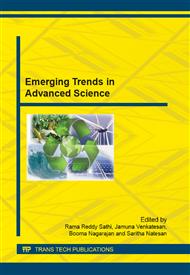p.51
p.59
p.65
p.75
p.81
p.89
p.97
p.105
p.111
Experimental Study on Reinforced Concrete Beam and Composite Column Joint with Square Steel Cage
Abstract:
For the optimum performance of the structural members, the joint of the beam and column has a significant role. This paper presents the behavior of encased steel column and reinforced concrete beam with an improved connection system. In this connection, the steel tube which interrupts the longitudinal reinforcement in the beam is made continuous in the joint zone. This is done by providing square steel cage inside the concrete casing at the joint. This system is easier for casting and tube filling when compared to the conventional method of in-situ welding and hole-drilling. Experiments were conducted on eight specimens with two specimens in each series which included four control specimens. Number of tiers and the number of concentric rings were the variables among the specimens. The specimens were tested under a constant axial load and reversed lateral loading. Experimental results indicate a significant increase in the lateral strength capacity and ductility ratio of the beam-column when the joint is provided with the square steel cage inside the concrete casing.
Info:
Periodical:
Pages:
81-88
Citation:
Online since:
August 2014
Authors:
Price:
Сopyright:
© 2014 Trans Tech Publications Ltd. All Rights Reserved
Share:
Citation:


